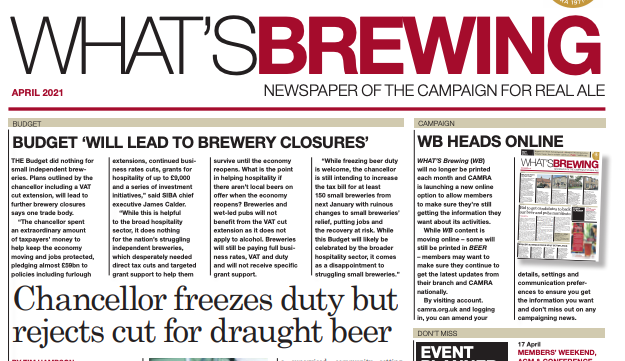What is liquid hop extract?
Audio Description
Login here to listen to the audio description

The latest developments in brewing science can easily pass us by as consumers. When innovation takes place in the brewhouse, it’s not always obvious on the pump clip why a certain beer might be interesting or different.
Take hop extracts. There is a suite of concentrated extracts with snazzy names on the market, including Salvo from Hopsteiner, Incognito from Baarth Haas and HopShot from Totally Natural Solutions. Some of them have been available for years, but you may not have heard of them.
These extracts are designed to be used hot side in the whirlpool in place of whole or pellet hops. The enriched extract Dynaboost, developed under the name YCH702, was recently released as a “flowable” product, not sticky or waxy, encouraging me to look again at what hop extracts offer to the brewer and to me as the drinker.
The impetus for the development of hop extracts may have been the new need to scale up heavily hopped recipes as cost-effectively as possible when craft brewers were being bought up by larger companies a decade ago.
The main selling point of hop extracts is improving efficiency. When using leaf or pellet hops in the whirlpool, they absorb some of the wort which is then lost through trub. Liquid extracts disperse into the wort, so nothing is lost, yield is increased and clean up is easier.
Additionally, the physical product takes up less space, so they are easier to store and cheaper to ship. From a sustainability point of view, this is incredibly important – Yakima Chief said a kilo of Dynaboost replaces 10kg of T-90 pellets. That’s a huge saving in freight costs and carbon emissions – from 0.406 MT C02e per pallet to 0.00615 MT C02e for the equivalent amount of liquid extract.
In practice, brewers are keen to experiment with extracts to ramp up hop flavours in the finished beer. Andy Parker from Elusive Brewing in Berkshire used it in a six per cent West Coast IPA called One Trick Pony.
“We had nice intensity from it, a really authentic Simcoe flavour and aroma to the beer. We brewed it across cask, keg and can and we package it from the same tank of beer.”
Knowing that many brewers pride themselves on only using whole-cone hops, I wanted to understand whether using an extract was an issue for Elusive.
“It’s a question I’ve wrestled with a bit. These products are made with the base hop – it’s a bit like using chilli oil rather than chillies. We typically use whole-leaf hops in our kettle. You get a nice true hop flavour from the raw hop, which becomes a layer of the overall flavour with pellets and other products you might use. I’m not hung up on the romance of it, just looking to get the best result we can for the consumer.”
One Trick Pony contains Simcoe alongside Citra and Nelson Sauvin, using regular hops, Dynaboost, Cryo pellets, T45 pellets and the liquid Hop Kief. As Elusive says itself, it’s thrown the kitchen sink at it. Melton Mowbray’s Round Corner Brewing has taken a similar approach, using Dynaboost alongside T90 and Cryo pellets for dry hopping, but it has chosen to keep its 5.2 per cent American Pale Ale dedicated to all things Simcoe. It is called The Simcoe Experience.
“After we added Dynaboost to the wort in the whirlpool, the smell in the brewhouse was phenomenal,” head brewer Colin Paige told me. “We don’t do a lot of single varietal stuff. It’s an interest piece because we should be able to get more hop into the beer.”
There seems to be a general agreement that Dynaboost needs supplementing with a more traditional dry hop rather than being used alone from a flavour perspective.
Using the extract adds both aroma and bitterness.
“We used a fair bit,” Colin explained. “About a litre in a 2,000-litre batch in the kettle. We couldn’t really go beyond that because it would have been exceedingly bitter. We were targeting the 50s.”
The Simcoe Experience came out at 56 IBU – a high level of discernible bitterness which really dominates as you sip. One Trick Pony has a long-lasting bitterness too, but it is dialled down compared to Round Corner’s effort. Both beers really ooze Simcoe character – a delightful resinous pine tone, which is dominant in both beers, layered with ripe peach and citrus which is higher in the mix in the Elusive beer. Both are excellent beers, not holding back on flavour or aroma.
I’m a confirmed fan of bold flavours, so I welcome experimentation with natural hop extracts to give me more bang for my buck. Others may not be so keen, and there are still brewers, like Timothy Taylor's which refuses to use anything other than whole leaf hops because it prefers that flavour profile. This diversity of brewing philosophies and practice can only be a positive thing for the consumer.

 view archive
view archive
 view events
view events